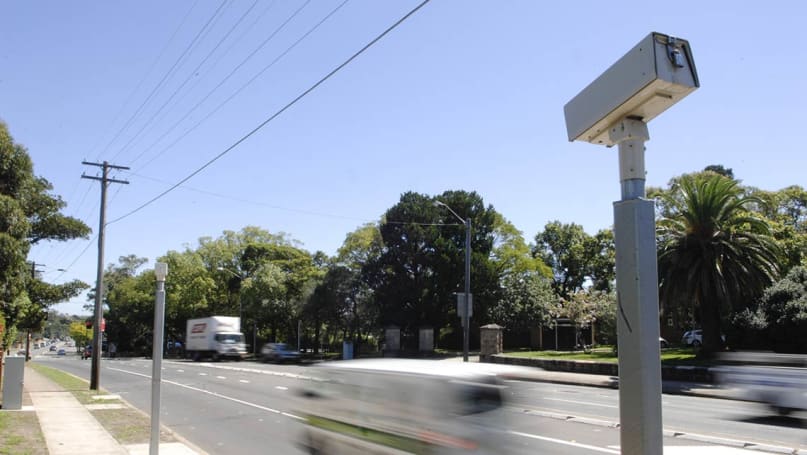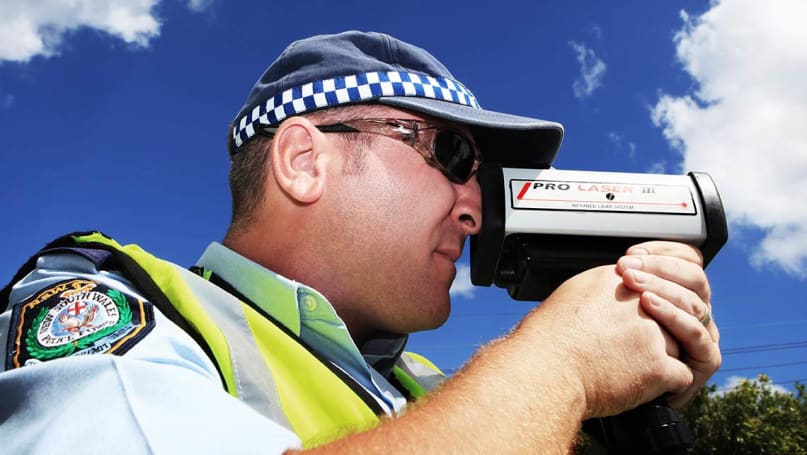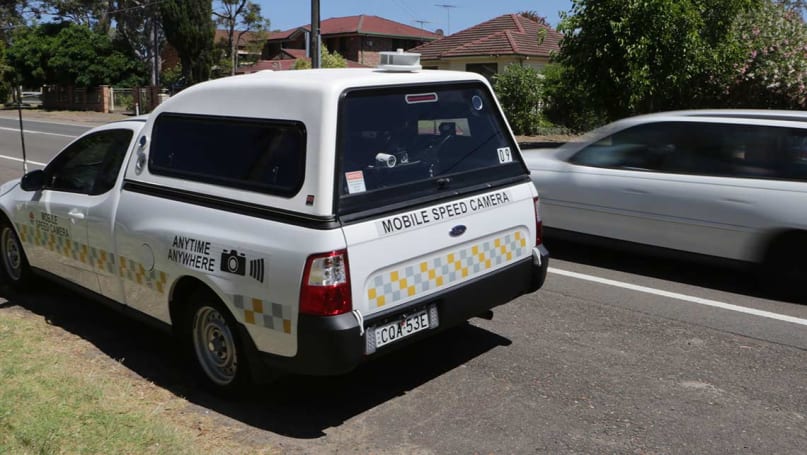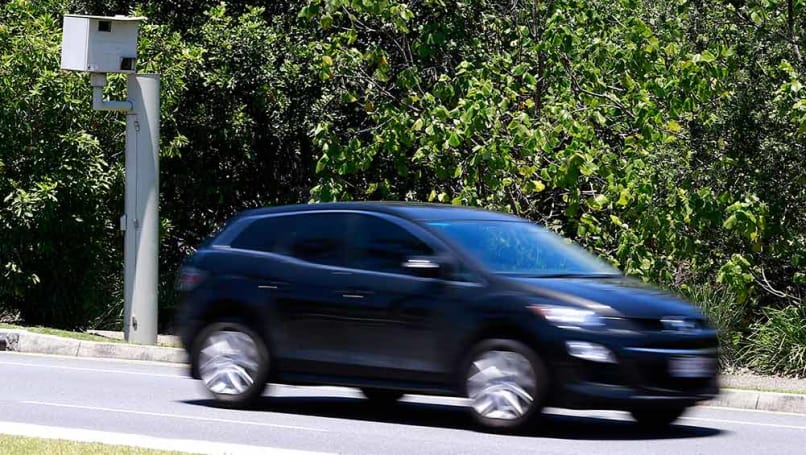
What countries drive on the left and which are on the right?
Q: Do more countries drive on the left or right? A: It’s a...
Browse over 9,000 car reviews

We’ve all done it; you drive past a white or silver SUV parked by the side of the road and think, was that a speed camera? By the time you’ve looked down to check your speed, you’re past the parked vehicle and you discover, to your horror, that you were a handful of kilometres over the posted limit.
Now suspicion turns to paranoia. Was that a speed camera? Did I just see a flash? How accurate is my speedo? How can I check whether I’ve just been pinged?
Paranoia then often turns to despair as you try to calculate the amount of the fine you’re up for, as well as how old you’ll be before you get those demerit points back.
Yep, speed cameras can certainly make your life a misery, especially when the fudge factor (the amount over the posted limit the authorities will tolerate) is so small.
In fact, there’s an argument that people drive around these days looking no farther ahead than the needle of their speedometer in an attempt to avoid speed camera fines.
Surely, argue camera opponents, drivers would be safer with their eyes down the road than on their dashboard.
Certainly not, say the law enforcement agencies which have become addicted to the cash raked in by speed cameras every year.
In fact, in some states, the government actually factors speeding fines into its annual budgets!

In any case, the game then becomes a waiting one where you keep on eye on the mailbox for the infringement notice to arrive in the mail.
How long does speeding fine take to come? As long as 28 days in some states (NSW) or as little as four days (Tasmania). Generally, you’ll have about a two week wait to learn whether the flash was for you.
Is there a way to check if you’ve been pinged before the letter arrives? Can you just google how to check if caught by speed camera NSW or how to check if caught by speed camera VIC?
Not really, and the various authorities have no online source for this information. You can phone the relevant department, but, again, there’s no official provision for this check to be made over the phone.

Different states and territories use different technology and systems for their speed cameras. There are two main types of camera, fixed and mobile.
The fixed ones are usually in places of high traffic density or risk (like tunnels and major arterials) while the mobile ones are carried either in police cars or vehicles operated by (in the case of Victoria) a private contractor.
Yes, that’s correct, the person operating a mobile speed camera in Victoria is not actually a police officer.
There are also in some states time over distance cameras where one camera takes your pic and a second one takes another pic some kilometres later. The time between those two points will determine your average speed which is then compared with the posted limit.
Intersections will also often feature what’s called a red light speed camera which, as the name suggests will catch drivers either running red lights, speeding through the intersection or both.
So how do speed cameras work? The cameras use either radar, LIDAR or laser technology to measure the speed of the cars passing by and they can pick out individual cars across three or more lanes of traffic.

Essentially, the tech will check a car’s speed and if it’s too high, snap goes the camera. It is that simple.
Traditionally, the cameras take the photo after the car has passed them, but newer tech means they shoot through the rear glass of the camera car, before you’ve even reached them.
So, can a speed camera get you from the front? Absolutely. The distance they shoot from can be as little as 12 metres.
How far can a speed camera catch you from a distance? As long as the car is close enough that the photo can identify the car’s number plate accurately, there’s no statutory outer distance limit.
Modern tech also means there’s not always a flash to accompany the camera. In low light, some use a red flash (to avoid dazzling the driver) and sometimes a normal white flash is still used.
Even if you see the bright flash, does speed camera flash automatically mean you’re getting a ticket? No, it doesn’t, because there might have been another car in the frame at the same time that the camera has identified as the speeding car.

Camera cars are often plain looking, mid-sized SUVs which blend in well with their surroundings and certainly don’t stand out. The exception is some states where the law requires a sign to be placed on the road before the camera to give drivers some warning. (Some states have sign-written camera cars to give you a fighting chance.)
However, it seems to have become something of a sport for the operators to make the sign as hard to spot as possible. That’s still better than Victoria where the law was recently changed to allow the camera car itself to be placed at the bottom of a hill, and/or hidden behind a tree or billboard.
Again, this varies form state to state, but there’s often a website that lists the locations of all fixed speed cameras and sometimes even the possible locations of mobile speed cameras.
Each state enforcement agency will tell you the locations are chosen because they’re black spots or high risk areas, but experience doesn’t bear that out.
Instead, they often appear to have been placed where they have the most potential to catch speeding cars and maximise the state’s revenue as a result.
The authorities will deny this, of course, but you can make up your own mind. Either way, speed camera revenue is a huge deal even if those same authorities would prefer you and I to refer to them as safety cameras.

Each state and territory has its own take on speed limit tolerance. That is, how much over the speed limit before you are fined. The laws generally require the actual speed detected to be wound back three km/h to take into account any small inaccuracies in the equipment and make the legal case watertight.
Again, it depends on where in Australia you are when it comes to how much is a fine for speeding. It also depends on how much over the limit you were and most states use a banding system where up to 10km/h over is one fine, between 10km/h and 20km/h over is another and so on.
You’ll also find that once you’re more than about 30 or 40km/h over the limit (25km/h over in Victoria) you’re looking at automatic license suspensions as well as a much bigger fine.

There are plenty of people who will tell you they know how to get out of a speeding fine. And some of them have. In some states you can write a letter to the traffic department and plead your case for having not had a traffic fine for X number of years.
If the speed you were snapped at is below 10km/h, sometimes this will get you off the fine and demerit points. In Queensland, though, there’s no allowance for this 'lenience'.
The other thing that’s handy to know is how to check demerit points. Most states give you 12 points to start with and you lose some every time you’re issued with a traffic fine.
Lose all 12 in any given (usually three-year) period, and you’re catching the bus for a few weeks. But you can check the status of your points by establishing an account with you state or territory licensing authority and checking your points online.
Comments